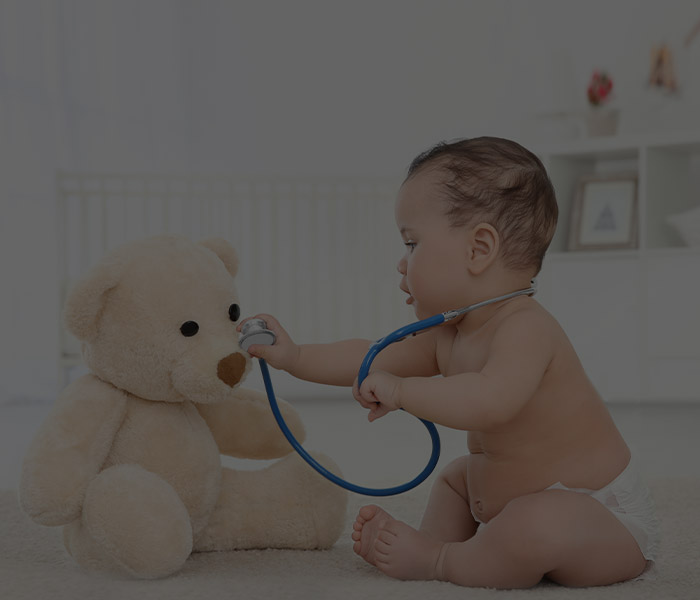Pediatric Fever Treatment Doctor in Frisco, TX
Pediatric fevers can have parents worried about their children. Usually, fevers in children can be quite harmless, as it’s a sign they are fighting off infection, However, there are some reasons why you should take your child to see a doctor if they have a fever. For more information, please contact Healing Care Pediatrics or book an appointment online. We serve patients from Frisco, TX and surrounding areas.


Table of Contents:
When should I worry about a pediatric fever?
What is considered a pediatric fever?
When should I take my child to the hospital for a fever?
How do you bring a child’s fever down?
Children have many different diseases and infections that can occur over the lifetime of their childhood. Some of these are common colds and urinary tract infections, but children also get sick with more serious illnesses like tuberculosis and pneumonia. When children get sick, their bodies can become weak and vulnerable to disease. Disease can cause a child to become feverish at different levels of severity. There are many causes of child fever, but doctors have found that treating fevers early helps patients stay healthy. Fearing a fever is common when someone is sick, but there is no need to be afraid if your child has a fever. Here are some reasons why you should not worry if your child has a high-grade fever.
Most fevers in children are easy to treat when you understand the cause for them. Fearing a fever makes you more willing to take action if your child has one. However, most childhood fevers are harmless and do not need further treatment other than cold cloths on their bodies, cool lotion, and if they feel headaches, or can’t sleep well, some children’s fever reducer. Children have many different ways of keeping their body temperatures normal. Thus, it’s important to treat all fevers in children with caution. However, there are some cases when you should worry about your child’s fever:
– Child is younger than 3 months old and their rectal temperature is 100.4oF (38oC) or higher.
– Child is older than 3 months with a temperature of 102.2oF (39oF) or higher, or if they have a disease or condition like cancer or sickle cell disease.
A pediatric fever is defined as a temperature above 100 degrees Fahrenheit in children. Children have a higher tolerance for fever compared to adults since their body systems are still growing and developing. However, a high fever can be dangerous for children – especially newborns and infants. Parents should know what to do if their child has a fever.
Parents should know that a pediatric fever is not the same as a normal childhood fever. Childhood fevers are normal and healthy for children, in fact, it is part of growing up, and the body being exposed to new bacteria’s and viruses. A child’s fever helps the body fight off infection and keep healthy cells. In addition to preventing diseases, a high fever can also wake up sleeping cells and muscles resulting in better muscle recovery after illness or injury. Therefore, parents need to monitor their child’s fever levels regularly.
If your infant’s fever is at or above the following, they should be seen by your primary care provider or pediatrician immediately:
– 100.0oF (Oral temperature taken)
– 100.4oF (Temperature taken through Rectal, Ear, or Across the Forehead)
– 99.0oF (Temperature taken under the arm)
When a child has a fever, their body temperature rises. Parents will often take their child to the hospital if their fever is higher than 101.0ºF. Most childhood fevers are easy to treat at home, but some do require medical attention. Children whose parents know what supplies to bring to the hospital stay healthy and happy.
A fever is a change in body temperature caused by an infection, allergies, or other illnesses. Most fevers occur due to viruses or other common infections. However, some childhood fevers are due to cancer or other diseases that affect the immune system. High fevers can damage organs and other body parts if not addressed properly. Children with high fevers must stay at a safe temperature and drink plenty of fluids. They also need to continue eating a balanced diet and get lots of sleep. Taking these steps will help to further prevent health problems.
A fever is a common health condition that affects millions of people worldwide. It is a result of a sudden increase in body temperature. Fever is a sign that something is wrong with your body. A fever kills bacteria and viruses, so it is important to treat a fever as soon as you see one. Fortunately, treating fevers has become much easier with the use of medical advances. Some of these medical advances include antibiotics, vaccines, and dialysis machines. By using these medical advances, doctors are able to treat diseases effectively without risking the lives of their patients.
When you have a fever, air conditioning or heating your home helps reduce your body’s heat. You can also put your child in a cool bath to help bring down your fever. Drinking water also helps your body to cool down since it circulates through your body faster when you are hot. You should also apply a cooling lotion to your body to help keep it clean and cool. All these things can help bring down the fever quickly.
For more information, come to Healing Care Pediatrics or contact us online. We serve patients from Frisco TX, Prosper TX, The Colony TX, Allen TX, Fairview TX, and surrounding areas.




